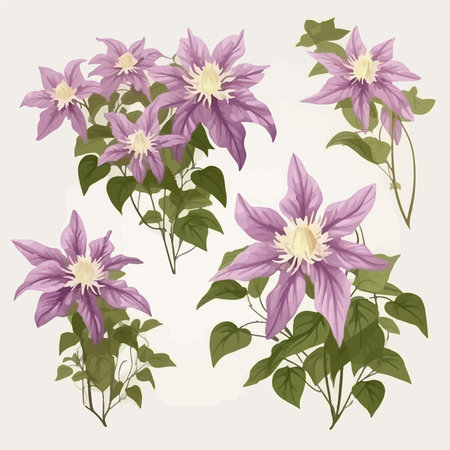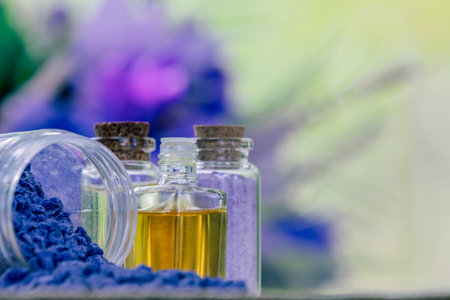The British Bedtime Brew Tradition
When one thinks of quintessentially British habits, the image of a steaming cup of tea often springs to mind. This tradition extends well beyond the morning or afternoon pick-me-up, finding its gentle place in the quiet moments before bed. For generations, Britons have turned to evening teas as both comfort and ritual—an essential part of winding down after a busy day. While classic black teas are deeply rooted in daily routines, there is a growing appreciation for herbal infusions specifically chosen for their soothing properties. Evening brews featuring calming botanicals are steadily becoming as familiar as Earl Grey or builder’s tea, reflecting an evolving culture that values relaxation and restorative sleep. As we explore lesser-known options like jasmine and passionflower, it’s clear that the British garden and its bounty continue to inspire new traditions at bedtime, blending heritage with a thoughtful approach to well-being.
Jasmine in the British Context
Jasmine, known for its intoxicating fragrance and delicate white blossoms, has a rather intriguing history in Britain. While not native to these isles, jasmine made its way to British gardens and conservatories during the early periods of botanical exploration, particularly in the 16th and 17th centuries when plant collectors began introducing exotic species from Asia and the Middle East. Initially, jasmine was cultivated as a status symbol among the gentry, admired for both its beauty and rarity.
As horticultural enthusiasm spread across the country, jasmine varieties such as Jasminum officinale (common jasmine) became familiar sights in walled gardens and cottage plots. Its ability to thrive in temperate climates and climb trellises or walls made it an enduring favourite among British gardeners, blending seamlessly with traditional English roses and lavender.
Beyond its ornamental appeal, jasmine found a niche within British herbal traditions. The dried flowers have been used to prepare infusions believed to aid relaxation and promote restful sleep—a practice inspired by Eastern medicinal customs but adapted to local tastes. Today, jasmine tea is valued not only for its flavour but also for its gentle sedative qualities, making it a thoughtful alternative to more mainstream bedtime brews.
Jasmine’s Journey: Key Milestones
| Period | Event | Significance |
|---|---|---|
| 16th–17th Century | Introduction to Britain by plant collectors | Brought new botanical diversity; became a symbol of sophistication |
| 18th Century | Cultivation in formal gardens and estates | Popularised among upper classes; prized for fragrance |
| Modern Day | Integration into herbal teas and wellness culture | Valued for sleep-supporting properties; readily available in health shops |
Soothing Qualities for Sleep
The calming effect of jasmine is supported both by traditional wisdom and emerging research. Its aroma is said to help lower anxiety levels—an important factor for those struggling with restlessness at night. When brewed as an infusion, jasmine’s gentle floral notes are paired with compounds thought to relax the nervous system without causing grogginess.
A British Take on Jasmine Tea for Sleep:
- Brew with freshly boiled water (not boiling) to preserve delicate flavours.
- Enjoy on its own or blended with chamomile or lemon balm for added calm.
- Savour as part of an evening ritual—perhaps while winding down with a favourite book or after tending the garden at dusk.

3. Passionflower: A Hidden Gem
Passionflower (Passiflora incarnata) remains one of the lesser-known yet quietly remarkable botanicals in the British herbal tradition. While it is not as widely celebrated as chamomile or lavender, passionflower has steadily found its place among herbalists and tea enthusiasts seeking gentle, natural sleep aids. This climbing plant, originally native to the southeastern United States, has been cultivated in British gardens for its exotic beauty and subtle medicinal properties.
The introduction of passionflower to Britain dates back to the late 17th century, when explorers and botanists brought specimens home from their travels. Over time, gardeners were charmed by its intricate blossoms—often likened to something out of a Victorian glasshouse—and began experimenting with its use in calming infusions. Today, dried passionflower can be sourced from specialist herb suppliers across the UK, though it still feels like a well-kept secret among those who cherish a more experimental cup of tea.
From an engineering perspective, what sets passionflower apart is its unique profile of flavonoids and alkaloids, particularly harman alkaloids, which are believed to gently modulate GABA receptors in the brain. This mechanism supports relaxation without heavy sedation—a balance prized by those who wish to unwind without feeling groggy come morning. Herbalists often recommend blending passionflower with other British garden staples like lemon balm or mint for a nuanced flavour and layered effect on sleep quality.
While modern clinical research is ongoing, anecdotal evidence from British herbal practitioners suggests that passionflower may help alleviate mild anxiety and encourage restful sleep cycles. Its subtle taste—earthy with floral undertones—makes it an excellent candidate for evening blends. In a culture increasingly interested in natural remedies and mindful rituals, passionflower’s rise within the British tea scene feels both timely and quietly revolutionary.
4. British Gardens as Tranquil Apothecaries
British gardens, whether sprawling estates or compact city plots, have long served as living apothecaries for those seeking natural remedies. Historically, the cottage garden was as much about utility as it was beauty: beds of jasmine and passionflower nestled among roses and foxgloves, each plant selected for its medicinal value as well as its charm. Today, this tradition continues in both public and private spaces across the UK, with gardeners purposefully cultivating calming botanicals that inspire the creation of sleep-supportive teas.
These gardens offer ideal growing conditions for jasmine and passionflower—two plants that thrive in the temperate British climate with a little care. In recent years, there has been renewed interest in blending heritage gardening practices with modern wellness trends. Many gardeners now grow these botanicals not only for their fragrance and aesthetics but also for their potential to promote restful sleep through homemade or locally sourced herbal infusions.
Below is a comparison of how traditional and modern British gardens contribute to nurturing these sleep-enhancing plants:
| Garden Type | Key Features | Role in Sleep-Supportive Teas |
|---|---|---|
| Traditional Cottage Garden | Mixed borders, herbs interwoven with ornamentals, informal layout | Jasmine and passionflower grown for household remedies; fresh flowers used in nightly brews |
| Modern Urban Garden | Containers, vertical planting, focus on wellness plants | Potted jasmine and passionflower provide easy access for daily tea-making; inspires new blends |
| Community & Allotment Gardens | Shared plots, collective care, educational workshops | Encourage knowledge exchange about lesser-known sleep herbs; communal harvests support local herbalists |
This blend of tradition and innovation is uniquely British. Gardeners here often see themselves as custodians of both landscape and lore—keeping alive stories about which flowers soothe a fretful mind or help one drift gently off to sleep. As more people turn to natural solutions for restlessness, British gardens remain at the heart of herbal tea culture: tranquil apothecaries where jasmine, passionflower, and other calming plants are cherished for their quiet power.
5. Blending and Brewing: Creating Sleep Teas at Home
There’s something deeply satisfying about preparing your own night-time infusion, especially when it draws on botanicals that could be sourced from a British garden or local supplier. If you’re keen to blend jasmine, passionflower, and other calming herbs into your evening ritual, a bit of planning and patience goes a long way.
Sourcing Botanicals Locally
Jasmine is often available dried from reputable tea merchants or specialist health shops across the UK. For those with a green thumb, certain varieties—like Jasminum officinale—can thrive in sheltered spots in southern Britain. Passionflower (Passiflora incarnata) prefers a sunny wall and well-drained soil; while it’s not native, it can do surprisingly well in temperate gardens if protected from frost. Supplement these with homegrown chamomile, lemon balm, or lavender for a quintessentially British flavour profile.
Cultivating Your Own Herbal Ingredients
If you’re interested in cultivating sleep-promoting botanicals yourself, start small. Jasmine needs regular pruning and support but rewards with abundant fragrant blooms. Passionflower vines will climb trellises with vigour come summer. Chamomile and lemon balm are traditional staples that naturalise easily in most soils—ideal for an informal cottage-garden approach favoured across the UK.
Home Blending Tips
When blending at home, begin with a base of dried chamomile or lemon balm. Add a pinch of dried jasmine flowers for fragrance and a few passionflower leaves or petals for their reputed calming effects. A light sprinkle of lavender can enhance both aroma and relaxation. Use roughly one teaspoon of mixed botanicals per cup. Steep with freshly boiled water (cooled for 2–3 minutes to avoid scalding delicate petals) for five minutes before straining.
Personalising Your Night-Time Cup
Experimentation is key: some prefer more floral notes, others lean towards the gentle earthiness of passionflower. Keep blends simple to start—two or three ingredients are enough to appreciate each botanical’s qualities without muddling flavours. With practice, you’ll find your own signature night-time blend that suits the British season, your palate, and your sleep routine.
6. Rituals and Recommendations
When it comes to incorporating jasmine, passionflower, or other lesser-known sleep teas into your evening routine, embracing a few thoughtful rituals can make all the difference. The British have long appreciated the calming ceremony of tea-making, and you can draw inspiration from these time-honoured traditions to create your own bedtime wind-down.
Choose Your Teaware with Care
Start by selecting a favourite teapot or cup—something that brings you comfort and perhaps a touch of nostalgia. Fine bone china or sturdy stoneware both have their place in the British home; whichever you choose, let it be a vessel that invites relaxation. Warming your teapot with a splash of hot water before brewing is a small but meaningful act, echoing classic British tea etiquette.
Create a Calm Environment
Set aside a corner of your lounge or bedroom for your nightly tea ritual. Dim the lights, perhaps light a candle scented with lavender or rose (a nod to traditional English gardens), and enjoy the gentle process of steeping your herbs. Let each step—measuring leaves, pouring water, waiting for the brew—become an opportunity for mindfulness rather than a task to rush through.
Mindful Moments: Sip Slowly
Resist the urge to check your phone or multi-task during this time. Allow yourself to simply sit, breathe in the delicate floral aroma of jasmine or the earthy notes of passionflower, and sip slowly. If you like, keep a journal nearby to jot down any thoughts or reflections—many Britons find this helps put worries to rest before bed.
Establish Consistency
The real benefit comes from making your tea ritual a nightly habit. Aim to start at roughly the same time each evening, signalling to your body and mind that it’s time to unwind. Over time, these simple actions become cues for sleepiness, gently nudging you towards restful slumber.
In true British fashion, remember that there’s no need for perfection; what matters most is creating a moment that feels genuinely restful for you. Whether alone or shared with loved ones, letting the calming spirit of garden-grown teas guide your night-time routine may soon become one of life’s quietest pleasures.


